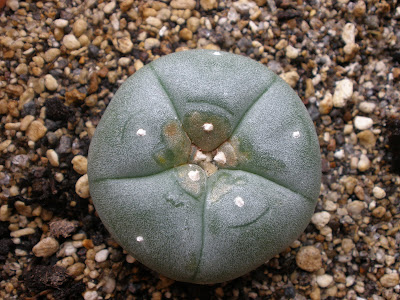On the 31/12/09 I tried my second graft. I used my best looking 3cm L. Williamsii button and grafted it onto a well growing T. Panchanoi.
This time I made sure I was prepared for it, I had brought razor blades and large elastic bands which I didn't have last time.
I was forced to super glue 2 elastic bands together to fit around the root stock's large pot.
I performed the graft pretty perfectly, keeping to the book at all times. I left it untouched for two days to let the root stock & scion join up. However when I came to inspect it things didn't look good!
The scion looked like it had shifted which will have broken the alignment with the xylem/phloem tubes (stopping the graft from growing well).
So once again I had to remove the scion and re-cut both surfaces, basically re-graft the scion and rootstock together.
Once again the graft was left with the scion held down with elastic.
 The scion held on with elastic bands & tissue sling.
The scion held on with elastic bands & tissue sling.Here are some photos taken on the 18/01/10 so roughtly 20 days after the tissue graft.
 Lophophora williamsii slice grafted onto T. Panchanoi rootstock.
Lophophora williamsii slice grafted onto T. Panchanoi rootstock.In the end it all looks good, and I am fairly sure it has taken well. The scion has plumped up nicely and pale green tissue between the ridges is visible which looks like signs of new growth!

I have high expectations for this graft! both the scion & rootstock were my best specimens so I hope they stay that way!


















